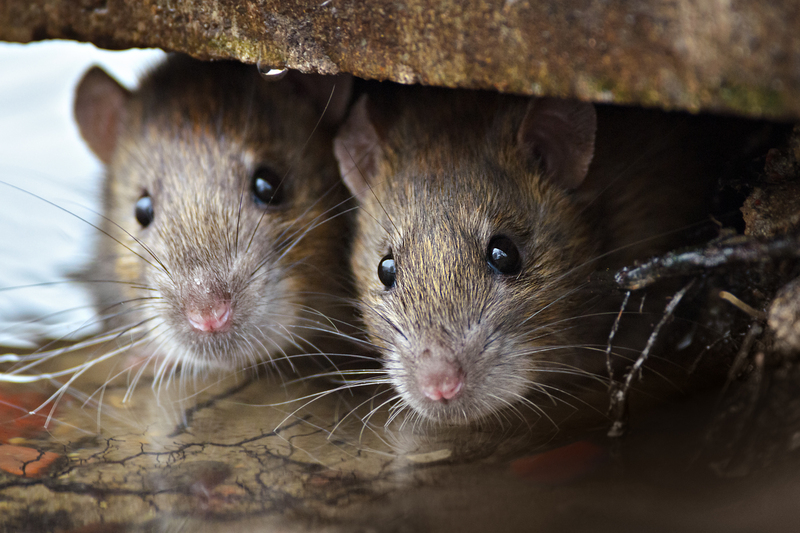Say Goodbye to Burnt Stovetop Residue: Here's How
Posted on 27/06/2025
Say Goodbye to Burnt Stovetop Residue: Here's How
If you love to cook, your stovetop is probably one of the most used areas in your kitchen. However, even the most careful cooks can sometimes leave behind stubborn, burnt stovetop residue that refuses to budge. Not only is this grime unsightly, but it can also affect the efficiency of your appliance and even alter the taste of your food. Saying goodbye to burnt stovetop residue is easier than you think! In this comprehensive guide, we'll explore proven methods, expert tips, and maintenance tricks to make your stovetop shine like new. Let's restore your kitchen's sparkle and keep your cooking space healthy and inviting.
Understanding the Problem: What Is Burnt Stovetop Residue?
Before learning how to remove burnt-on residue from your stovetop, it's important to understand what causes it. When pots and pans overflow or food spills while cooking, those drips and splatters can quickly bake onto the hot surface. Over time, repeated exposure to heat turns these spills into tough, carbonized deposits that stick tenaciously to the stovetop.
- Food Spills: Boilovers, sauces, and oils can harden onto the stove.
- Sugar or Dairy: Syrups, milk, or cheese cause extra-sticky, burnt residue.
- Overlooked Spills: Unattended messes become harder to remove as they burn in place.
This buildup is not only unpleasant to look at, but can also harbor bacteria if left unaddressed. In addition, burnt-on residue can smoke and smell, especially when the burner heats up, leading you to ask: How do I get rid of burnt residue on my stovetop? Thankfully, the answers are simpler than you might think.

Preparations Before Cleaning Your Stovetop
Preparation is key to effective, damage-free cleaning. Before you dive in, take the following steps to ensure safety and success:
- Turn Off and Unplug: Immediately after cooking and before cleaning, switch off the stove and unplug if possible. Allow it to cool completely.
- Remove Components: Detach grates, burner caps, and knobs if your model allows. Soak removable parts in warm, soapy water.
- Gather Tools: Use non-abrasive sponges, microfiber cloths, a plastic scraper (never metal), and cleaning solutions (store-bought or natural).
- Check the Manufacturer's Manual: Some stovetops, especially glass or induction models, require special care and specific cleaning agents to avoid scratches or damage.
The Best Methods for Removing Burnt Stovetop Residue
Let's dive into the trusted tips and step-by-step instructions on how to clean burnt stovetop stains, leaving your cooking space sparkling and hygienic.
1. Baking Soda and Vinegar: The Classic Combo
Baking soda is a gentle abrasive, while white vinegar dissolves grease and provides a fizzing action that loosens stubborn residue.
- Sprinkle baking soda generously across the burnt areas.
- Spray or drizzle white vinegar on top. Allow the mixture to bubble and sit for 10-15 minutes.
- Gently scrub using a damp, non-abrasive sponge or microfiber cloth.
- For thick residue, repeat the process or use a plastic scraper--never a metal one--to lift the grime.
- Wipe the area with a clean cloth dipped in water, then dry thoroughly.
Expert tip: For extra-tough stains, cover the area with a damp cloth over the baking soda & vinegar mix and let it rest for 30 minutes before scrubbing.
2. Steam Power for Burnt-On Buildup
Steam is a powerful, chemical-free way to get rid of tough, burnt-on stovetop residue. Steam loosens the bond between burnt food and surfaces.
- Fill a pot with water and bring it to a boil on the burner with the most residue.
- Allow the steam to circulate for 5-10 minutes while covered.
- Turn off the stove, let it cool slightly, and then wipe away loosened debris with a soft, damp cloth.
- If needed, follow up with baking soda and vinegar for any remaining marks.
This technique is especially effective for glass and ceramic stovetops, where you want to avoid harsh scrubbing.
3. Lemon and Salt for a Citrus-Fresh Approach
For a natural, pleasant-smelling solution to remove burnt stovetop residue, use lemon and salt:
- Cut a lemon in half, dip the cut side into coarse salt.
- Scrub the burnt spots using the lemon, squeezing lightly to release juice.
- Let sit for a few minutes, then wipe with a wet cloth.
- This method is gentle enough for most surfaces and leaves your kitchen smelling fresh.
4. Commercial Cleaners: When DIY Isn't Enough
Sometimes, home remedies may not cut it. If the burnt grime is ancient or particularly stubborn, look for commercial stove top cleaners specifically designed for your stove material.
- For glass or ceramic stovetops: Use a cream-based cleaner with a soft pad to avoid scratches.
- For gas and coil tops: Heavier-duty degreasers may be used, but always rinse thoroughly.
- Always follow the instructions on the label and test a small, inconspicuous area first.
5. Razor Blade for Glass Stovetops (Use With Caution!)
If you have a glass cooktop with stubborn, thick burnt-on residue:
- Hold a fresh, single-edge razor blade at a 45-degree angle.
- Gently scrape the residue, taking care not to gouge or scratch the glass.
- Clean with a suitable stovetop cleaner afterward.
Warning: Only use this technique if your stovetop's manufacturer approves, and never on metal, painted, or enamel surfaces.
How to Prevent Burnt Stovetop Residue in the First Place
Once you've learned how to clean burnt-on residue from your stove, it's wise to develop habits that keep messes from building up again. Prevention is truly the best form of maintenance!
- Wipe spills quickly: Remove spills and spatters after cooking, before they harden or burn.
- Use splatter guards and lids for messy or oily dishes.
- Stay close while cooking: Unattended boiling is often the root cause of burnt messes.
- Deep clean once a week: Even if it looks clean, regular maintenance will prevent build-up.
Special Care for Each Stovetop Type
Gas Stovetops
- Remove grates and burner caps for soaking and scrubbing.
- Keep burner holes clear using a pin or needle to remove gunk (turn off gas first!).
Electric Coil Stovetops
- Remove and soak the coils if the model allows.
- Clean drip pans thoroughly, as these tend to accumulate grime.
Glass or Ceramic Stovetops
- Avoid abrasive pads or scouring powders that can scratch.
- Use only stovetop-approved cleaners and wipe with soft cloths.
Frequently Asked Questions about Burnt Stovetop Residue
-
Q: Can I use steel wool or metal scrapers?
A: No. These can cause scratches or permanent damage--always choose a non-abrasive or plastic tool. -
Q: What if burnt stains won't come off after several attempts?
A: Try soaking the area with a wet cloth or commercial cleaner. If all else fails, professional cleaning services may be necessary. -
Q: How often should I clean my stovetop?
A: Daily wipe-downs prevent most issues. Deep clean once a week, or immediately after any messy spills. -
Q: Will these methods remove burnt residues from oven doors too?
A: Many will! For oven doors, ensure that the chosen cleaner is safe for glass or enamel surfaces.

Quick-Reference Table: Cleaning Methods for Each Stovetop
| Stovetop Type | Recommended Cleaning Method | Precautions |
|---|---|---|
| Gas (Metal) | Baking soda & vinegar, degreaser | Avoid water on igniters |
| Electric Coil | Baking soda, mild soap, soaking | Do not immerse coils unless labeled removable |
| Glass/Ceramic | Cream cleaner, gentle scraping | No harsh abrasives or rough pads |
Final Thoughts: Keep Your Stovetop Spotless for Good
Getting rid of burnt stovetop residue doesn't need to be a battle. With the right approach--whether it's tried-and-true baking soda and vinegar solutions, the steam method, or safe commercial products--you can bring back your appliance's shine and prolong its lifespan. Consistent maintenance and prompt cleaning are your best weapons against stubborn burnt-on stains.
Remember: the key to a sparkling stovetop is regular care and immediate action after spills. Follow the techniques in this guide, and you'll quickly learn how to say goodbye to all traces of burnt stovetop residue!




